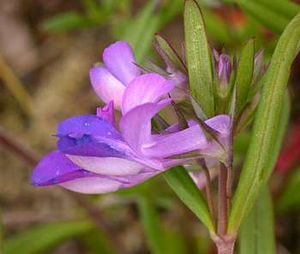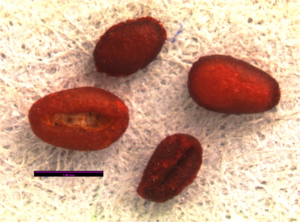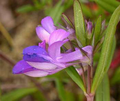Difference between revisions of "Collinsia grandiflora"
| Line 23: | Line 23: | ||
'''Abbreviation code (Codon):''' COGR2 | '''Abbreviation code (Codon):''' COGR2 | ||
| − | + | ||
| − | + | ||
| − | + | ||
| − | + | ||
| − | + | ||
| − | + | ||
| − | + | ||
| − | + | ||
| − | + | ||
| − | + | ||
| − | + | ||
==Description== | ==Description== | ||
Revision as of 12:47, 24 May 2012
Common name: Large-flowered blue-eyed Mary, Blue-lips blue-eyed Mary, Giant blue-eyed Mary
| Collinsia grandiflora | |
|---|---|

| |
| Collinsia grandiflora | |
| Scientific classification | |
| Kingdom: | Plantae |
| Subkingdom: | Tracheobionta |
| Phylum: | Spermatophyta |
| Subphylum: | Magnoliophyta |
| Class: | Magnoliopsida |
| Subclass: | Asteridae |
| Order: | Scrophulariales |
| Family: | Scrophulariaceae |
| Genus: | Collinsia |
| Species: | C. grandiflora
Lindl. |
Abbreviation code (Codon): COGR2
Contents
Description
Collinsia grandiflora, Scrophulariaceae , Large-flowered blue-eyed Mary, Blue-lips blue-eyed Mary, Giant blue-eyed Mary General: Annual, the stem simple or branched, erect, 0.5-5 dm. tall, minutely pubescent.
Leaves: Lower leaves opposite, petiolate, often toothed when well developed; upper leaves opposite or whorled, entire, usually glabrous, becoming sessile upward, narrowly elliptic or oblong to nearly linear.
Flowers: Flowers 1-few on short pedicels in the axils of reduced upper leaves; calyx 5-8 mm. long, 5-lobed; corolla bi-labiate, blue with white or pinkish upper lip, 9-17 mm. long, the tube abruptly bent at a right angle to the calyx, shortly pouched at the bend; stamens 4.
Fruit: Capsule opening along 4 lines.
Bloom Period
April - June
Distribution
West of the Cascade summits, British Columbia to California, and in the Columbia River Gorge.
Habitat
Ecological Setting-Open, moist to rather dry areas, low to moderate elevations in the mountains. Soil Texture-Fine to medium Nutrients-Medium nutrient requirements Soil Reaction / Salinity-No salinity tolerance Moisture Regime-Moist to drier soil not heat resistant and requires cool nights. Shade Tolerance-Part shade
Uses
Propagation
Sow seeds in both the fall and early spring for the maximum season of flowering.
| FloweringTime | April - June |
| Crop Intervals | Annual |
Seed
Seed sample from: 2010
'Average measurement: 0.7 x 1.5 x 1
Measurement range: L: 0.5 - 0.9, W: 1 -1.6, D: 0.7 – 1.1
Features
Color: Seed bright red with a large, white, elliptical shaped depression on the longer face of the seed that is the hilium.
Syrface: Seeds matte and bumpy, with some wrinkling around the hilium depression.
Could be confused with: Collinsia parviflora.
Latitudinal cross section: elliptical ![]()
Longitudinal cross section: irregular
Basic Explanations and Assumptions:
The dimensions for the seeds are length x width x depth. The location of the hilum is used as the base of the seed, and the length is measured from hilum to the opposite apex. Where a style is present, the length is measured from the hilum to the bottom of the style. Width is measured at a right angle to the length at the widest part. Depth is measured at a right angle to the intersection of height and width lines.
Measurements included are the mean average for each measurement of ten separate seeds.
All measurements in millimeters unless otherwise noted.





